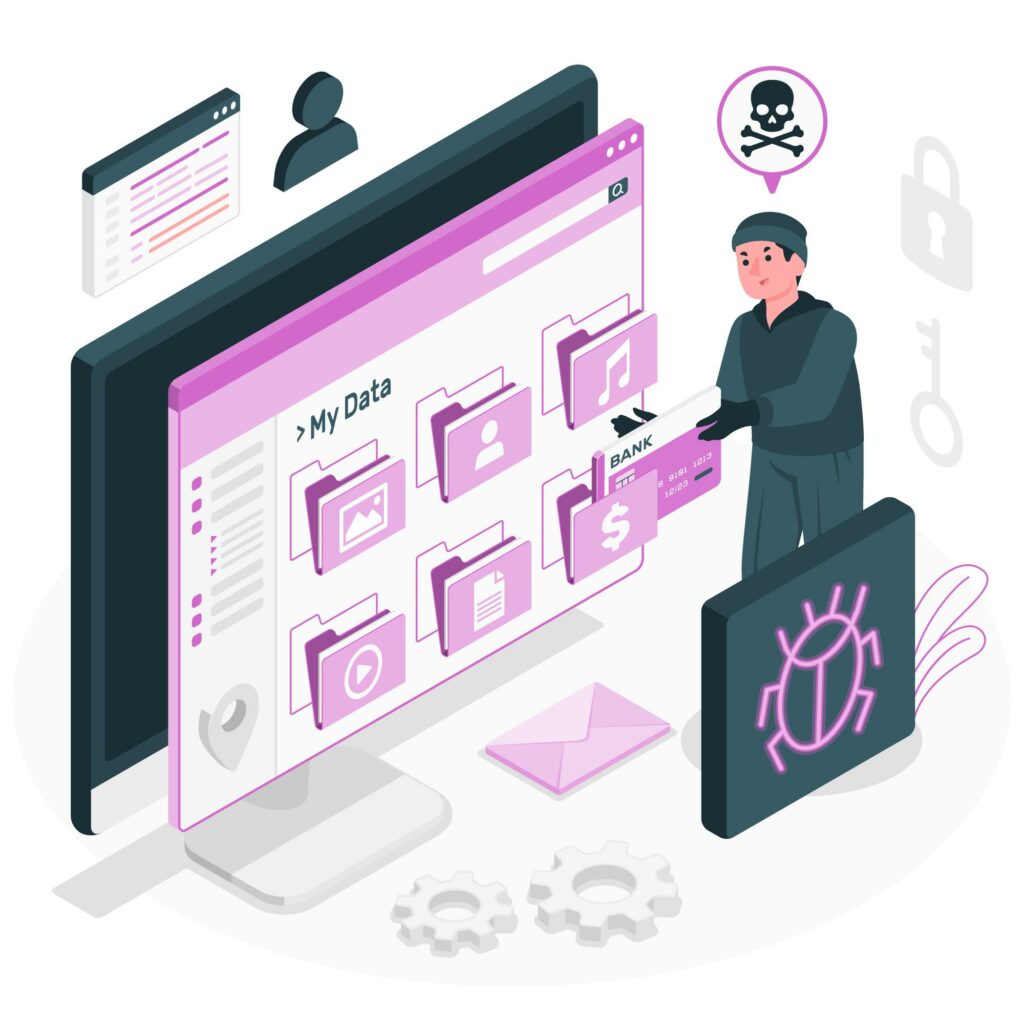Many Best Practices for DevSecOps can help businesses Businesses face ongoing challenges to accelerate and optimize software delivery. To address this, many have embraced DevOps, which promotes communication, teamwork, and seamless integration between software development and IT operations.
Merely embracing DevOps isn’t sufficient for guaranteed success. To fully harness the advantages of DevOps, companies must also incorporate a security-centric approach, termed DevSecOps
What are the Best Practices for DevSecOps?
DevSecOps emphasizes blending security into the software development lifecycle. Through automated code analysis, defect identification, and merge security into development, businesses can minimize vulnerability risks and maintain application security.

The rapid evolution and intricacy of contemporary software development make DevSecOps adoption imperative for sustaining competitiveness. DevSecOps aims to embed security within the software development cycle, enabling organizations to bolster application security and mitigate defect risks. While numerous DevSecOps guidelines exist, some hold more significance. Here are the top 10 DevSecOps guidelines to implement right away:
Shift Left
An essential DevSecOps guideline is “shift left” security. This entails incorporating security assessments early in the development cycle, rather than as an afterthought. Early integration aids in promptly identifying and addressing security threats.
Implement Continuous Integration and Continuous Delivery (CI/CD)
If CI/CD isn’t part of your operations yet, it’s time to integrate it. CI/CD, pivotal to DevOps, is crucial for optimal DevSecOps implementation. Through CI/CD, teams can automate code building, testing, and deployment, streamlining the process and minimizing human errors.
Employ Obfuscation Techniques
To safeguard code from reverse engineering, leveraging obfuscation is paramount. Obfuscation involves making code intricate to comprehend, thereby thwarting unauthorized access. Techniques encompass code encryption, compression, and white-box cryptography.
Conduct Threat Modeling

Threat modeling involves pinpointing, assessing, and ranking system and data risks. A prominent method is the STRIDE model, which identifies six risk categories:
- Firstly, spoofing: Impersonating someone else
- Secondly, tampering: Altering data
- Thirdly, repudiation: Denying an action
- Information disclosure: Unauthorized data access
- Denial of service: Blocking access
- Finally, Elevation of privilege: Unauthorized access gain
Embrace Microservices Architecture
DevSecOps allows microservices adoption by decomposing monolithic applications into smaller services, offering benefits like:
- Firstly, independent development, testing, and deployment of services
- Secondly, individual scalability of services
- Finally, seamless updates without affecting other application parts
This architecture simplifies security control implementation, allowing security measures at the service level.
Use Cloud-native Technologies
With the global shift to cloud computing, DevOps is also evolving cloudwards. DevOps in the cloud necessitates leveraging cloud-native technologies designed for scalability, resilience, and manageability.
Some of the popular options include:
- Containers (e.g., Docker, Kubernetes)
- Microservices
- Serverless computing
- NoSQL databases (e.g., MongoDB, Cassandra)
Encrypt Data Transfers

A pivotal DevSecOps guideline and the Best Practices for DevSecOps. is encrypting data during transit to prevent unauthorized interception and access.
Implement Role-based Access Control (RBAC)
RBAC ensures appropriate data access to authorized individuals at suitable times, preventing unauthorized access and alterations.
Monitor and Record Activities
Regular monitoring and logging of system activities are vital for spoting potential threats and unusual patterns indicating potential attacks.
Embed DevOps Across the Organization
For successful DevOps adoption, it must permeate all organizational layers. This cultural shift may need to buy-in from all staff levels, from leadership to frontline employees. Embracing the DevOps culture is paramount for reaping its full benefits.
Prioritize Automation
Automation expedites security testing, enabling early vulnerability detection. Automated security tests should span the development cycle, with most being automated to prevent bottlenecks.

Various automation tools, each offering unique functionalities, are available for tasks like after deployment monitoring and code analysis. Manual approval gates can be incorporated at critical stages for swift validation.
Automate Wisely
You have to consider these Best Practices for DevSecOps. Automation aims to maintain pipeline speed and efficiency. To achieve this, automation processes should be:
- Selective: Focus on specific daily code changes rather than comprehensive scans.
- Dynamic: Secondly continuous dynamic testing offers real time vulnerability insights.
- Vigilant: Thirdly, cross reference automated scans with vulnerability lists from trusted sources like OWASP.
- Effective: Finally, use smart alerting to prioritize genuine issues and avoid overwhelming teams.
Engage Red Teams, Blue Teams, and Bug Bounties
Proactive measures like red teams (ethical hackers), blue teams (internal defense), and bug bounty programs (rewarding vulnerability reporting) aid in timely vulnerability identification and mitigation.
Educate Developers
Given that coding errors contribute significantly to issues, developer training on secure coding is crucial.
Resources like the Common Weakness Enumeration (CWE) list and OWASP Top Ten are not valuable for this purpose. Establishing and enforcing secure coding standards further bolsters application security.
Utilize DevSecOps Tools
To match the pace of DevOps, DevSecOps teams require efficient tools. Tools should streamline processes and give importance to actionable insights, reducing false positives and enhancing security.
Strengthen Collaboration Between Developers and Security
DevSecOps principles emphasize breaking silos between engineering and security, creating collaboration and shared responsibility.
Champion Security Testing Culture

Cultural shifts toward security testing are pivotal for DevSecOps success. Changes can be driven top down or organically, with both approaches having merits.
Automate Security Scanning Across the Board
Just as DevOps teams automate CI/CD processes, DevSecOps should automate security scanning. Assess each workflow step for automation potential, creating a important automation list and increasing accordingly.
Implement Automated Security Scanner Governance
Governance ensures standard scanner use and streamlines compliance, with tools like Open Policy Agent letting policy enforcement and documentation.
Integrate Security Guardrails
This is one of the Best Practices for DevSecOps. Beyond giving scanning tools, integrate security checkpoints or guardrails informed by scanner outputs, using policy as code to control CI/CD workflows.
Approach DevSecOps as a Data Challenge
With the excess of tooling generating vast data, analyzing this data is vital for minimizing issues. Employ big data techniques to swiftly analyze combined scanner results.
Ease Engineering Team Workload
DevSecOps should reduce, not amplify, the engineering team’s workload. Tooling and workflow combinations can reduce manual data analysis burdens, letting smoother DevSecOps adoption.
Automate Ticket Creation and Tracking
All detected errors should trigger automated Jira ticket creation, whether genuine or false positives, making sure of accountability and audit compliance.
Regularly Update Tools
Regular tool evaluation ensures alignment with DevSecOps practices, making periodic tooling updates.
Invest in Workflow Optimization
Establishing and automating security workflows for vulnerability detection, exemption requests, and cross team communication is essential for scaling security practices.
Consider App Lifecycle Security
Security scans should span the entire application lifecycle, having CI and CD pipelines. This includes Software Composition Analysis, Static and Dynamic Application Security Testing, Infrastructure as Code Testing, Container Security, Fuzz Testing, and API Testing.
[Want to learn more about the Best Practices for DevSecOps and its importance in your business? Click here to reach us.]
Conclusion
By sticking to these Best Practices for DevSecOps, organizations can bolster their security posture, enhance collaboration, and streamline their software development and deployment processes. with the support of an advanced Devsecops team such as Bobcares, you can easily integrate Devsecops to your business.
PREVENT YOUR SERVER FROM CRASHING!
Never again lose customers to poor server speed! Let us help you.
Our server experts will monitor & maintain your server 24/7 so that it remains lightning fast and secure.







0 Comments